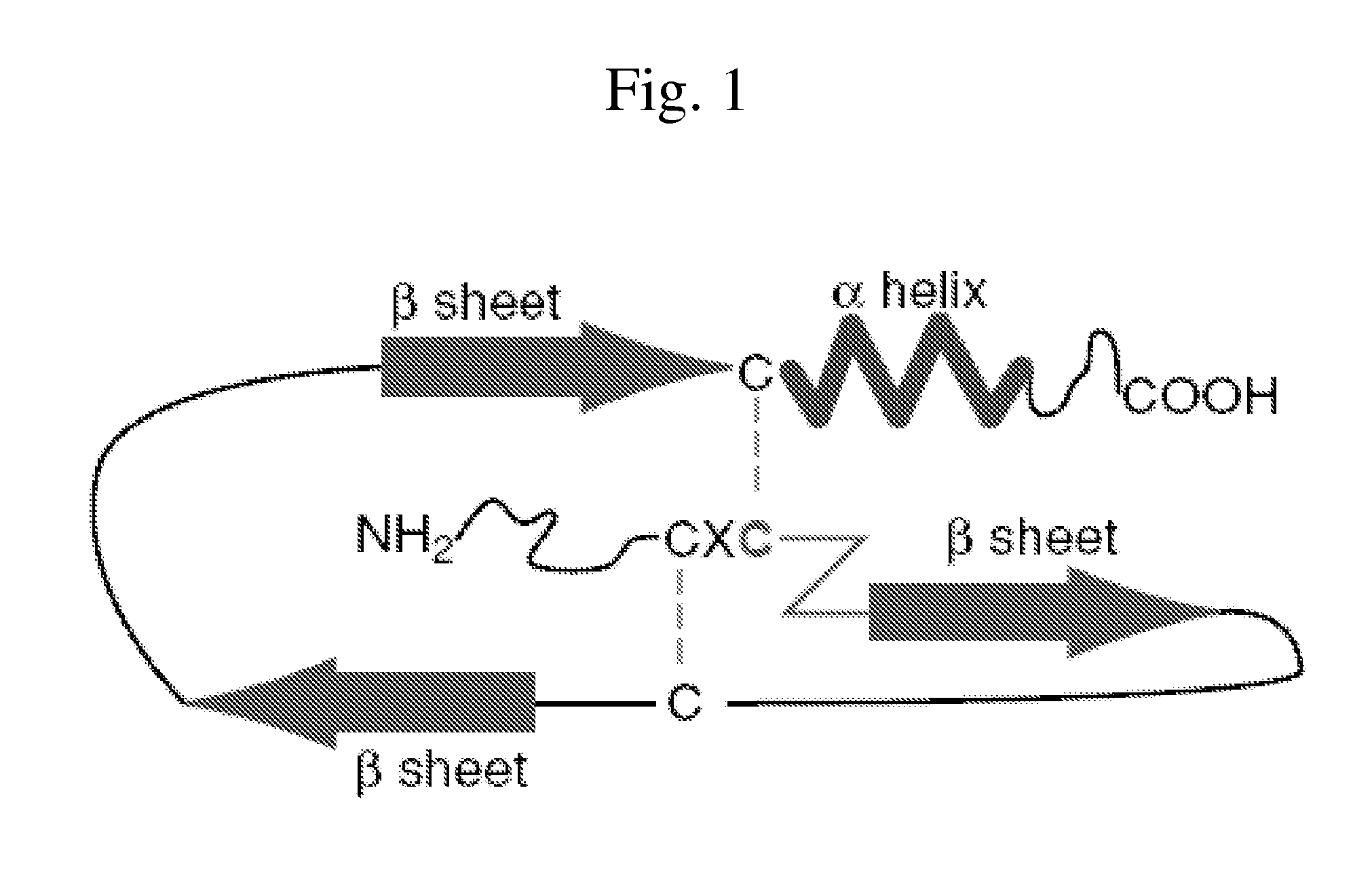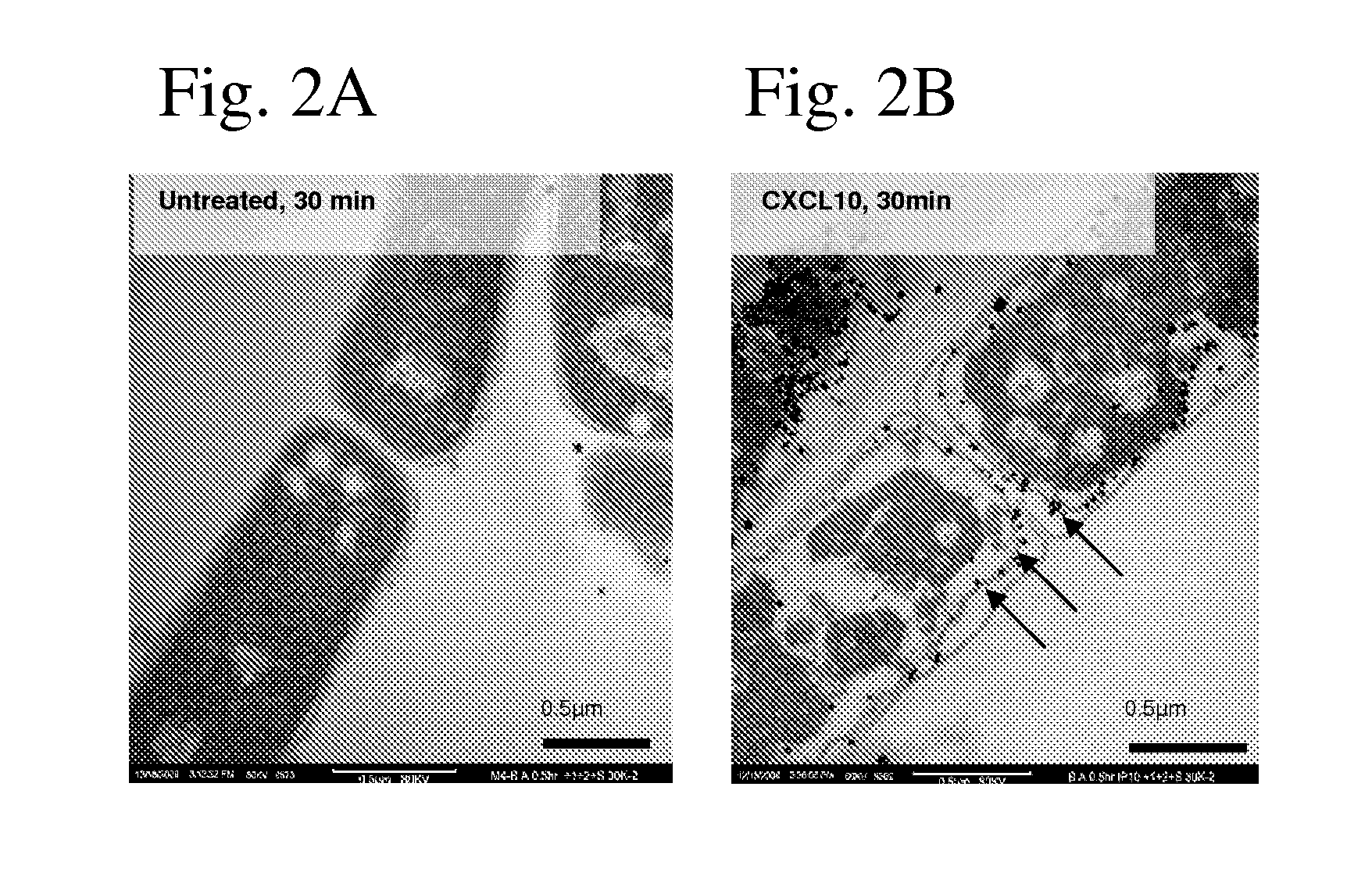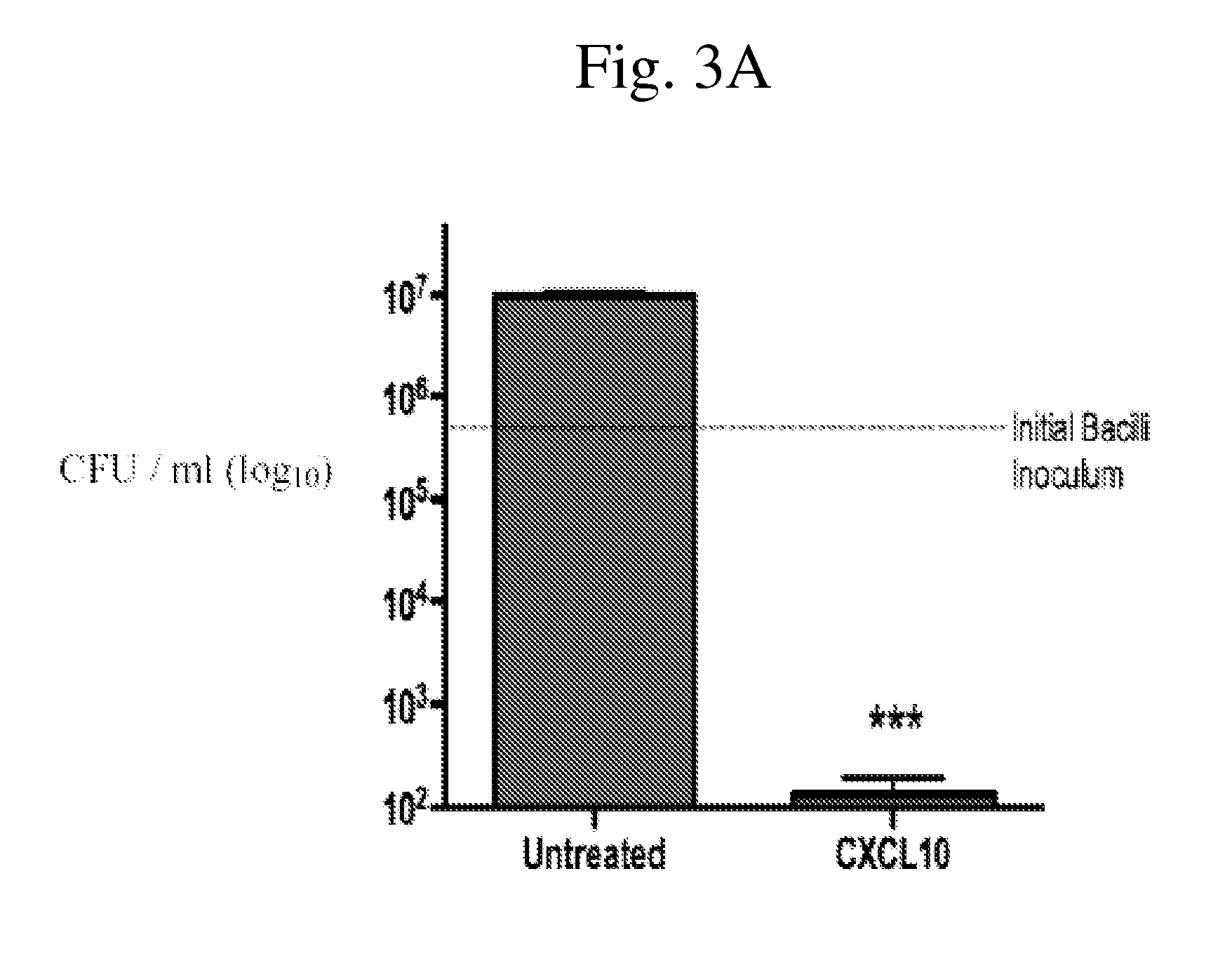Compositions and methods for using and identifying antimicrobial agents
a technology of antimicrobial agents and compositions, applied in the direction of antibacterial agents, peptide/protein ingredients, antibody medical ingredients, etc., can solve the problems of limited antibiotic choice, concentration-dependent relative degree of host toxicity of all antimicrobial drugs on the market, etc., and achieve the effect of neutralizing the spores
- Summary
- Abstract
- Description
- Claims
- Application Information
AI Technical Summary
Benefits of technology
Problems solved by technology
Method used
Image
Examples
embodiments
[0161]In accordance with one embodiment compositions and methods are provided for neutralizing pathogenic organisms. More particularly, applicants have found that interferon-inducible ELR− CXC chemokines have efficacy against pathogenic bacteria including Bacillus anthraci. In accordance with one embodiment a composition is provided for neutralizing pathogenic bacteria in all growth phases including sporulated forms. The compositions can be formulated for treatment of external surfaces including hard surfaces such as, medical equipment and medical devices, or the compositions can be formulated for topical or internal administration to subjects, including humans.
[0162]In accordance with one embodiment a composition is provided comprising a non-native peptide, or a peptidomimetic derivative, comprising a sequence selected from the group consisting of SEQ ID NO: 3, SEQ ID NO: 6 and SEQ ID NO: 9 or a sequence that differs from SEQ ID NO: 3, SEQ ID NO: 6 or SEQ ID NO: 9 by 1, 2, 3, 4 or ...
example 1
[0317]Chemokines CXCL9, CXCL10, and CXCL11 Antimicrobial Activity
[0318]We tested whether human CXCL9, CXCL10, and CXCL11 exhibited antimicrobial activity against B. anthracis. These interferon-inducible (ELR−) CXC chemokines exhibited not only antimicrobial activity against the vegetative form of the organism, but also the spore form such that spore germination was blocked or reduced. An effect on spores is unprecedented, even for any of the traditional antibiotics. We found a hierarchy of activity with human CXCL10>CXCL9>CXCL11 in their ability to kill bacilli and block spore germination. We also tested the effects of recombinant murine CXCL9, CXCL10, and CXCL11 and found similar effects but with a different hierarchy of activity: CXCL9>CXCL10>CXCL11 (of note, human CXCL10 and murine CXCL9 exhibit very similar antimicrobial and anti-spore effects at the same concentrations).
[0319]Unless otherwise stated, recombinant human Interferon-inducible (ELR−) CXC chemokines were used for the...
example 2
[0322]In vivo Activity of CXCL9, CXCL10, and CXCL11
[0323]To test the biological relevance of CXCL9, CXCL10, and CXCL11 in vivo, we initially conducted a study comparing susceptible A / J and resistant C57BL / 6 mice inoculated with B. anthracis Sterne strain spores that luminesce when undergoing germination. Using an in vivo Imaging System (IVIS), spore germination was monitored over time after intranasal inoculation of spores; little to no spore germination occurred in the lungs of the resistant C57BL / 6 mice while highly detectable levels of germination were detected in the lungs of the A / J mice. Measurement of CXCL9, CXCL10, and CXCL11 levels in lung homogenates from these animals revealed that C57BL / 6 mice had significantly higher levels of CXCL9 and CXCL10 after spore inoculation than did A / J mice. In vivo neutralization studies to further test the biological significance of these interferon-inducible (ELR−) CXC chemokines revealed (FIG. 9) that antibody neutralization of CXCL9, CXC...
PUM
| Property | Measurement | Unit |
|---|---|---|
| Fraction | aaaaa | aaaaa |
| Fraction | aaaaa | aaaaa |
| Composition | aaaaa | aaaaa |
Abstract
Description
Claims
Application Information
 Login to view more
Login to view more - R&D Engineer
- R&D Manager
- IP Professional
- Industry Leading Data Capabilities
- Powerful AI technology
- Patent DNA Extraction
Browse by: Latest US Patents, China's latest patents, Technical Efficacy Thesaurus, Application Domain, Technology Topic.
© 2024 PatSnap. All rights reserved.Legal|Privacy policy|Modern Slavery Act Transparency Statement|Sitemap



